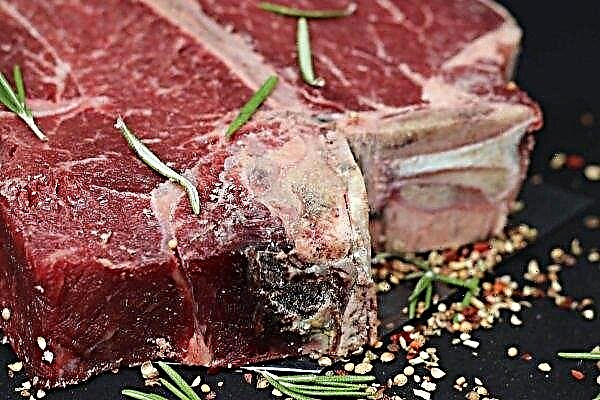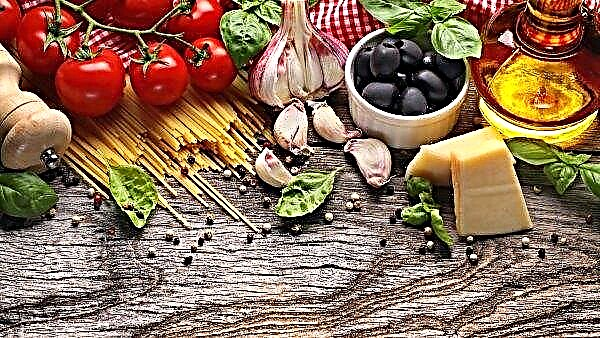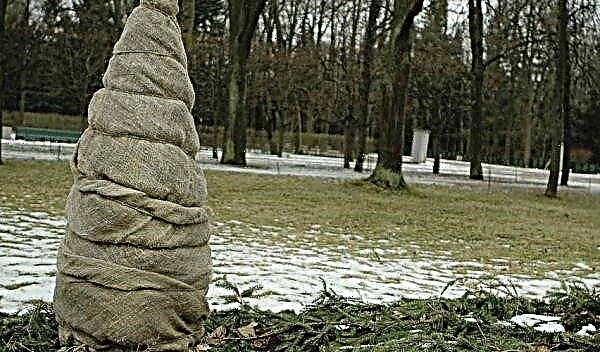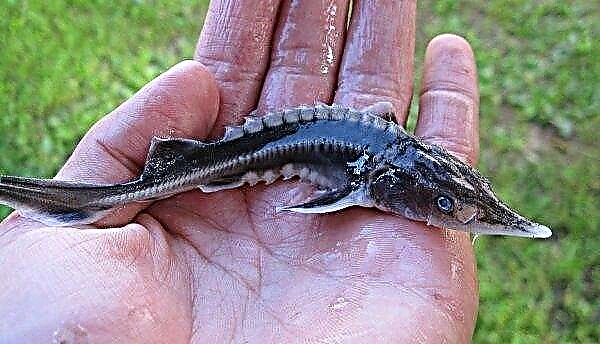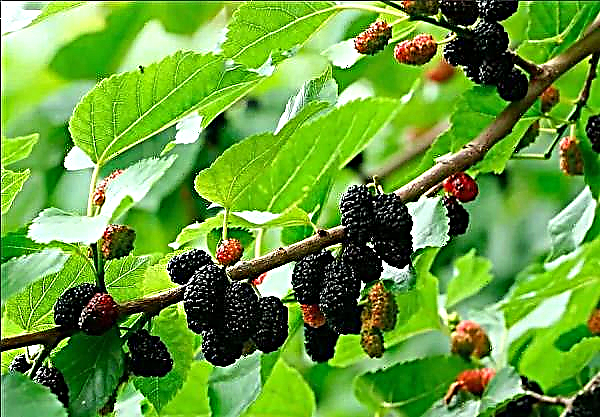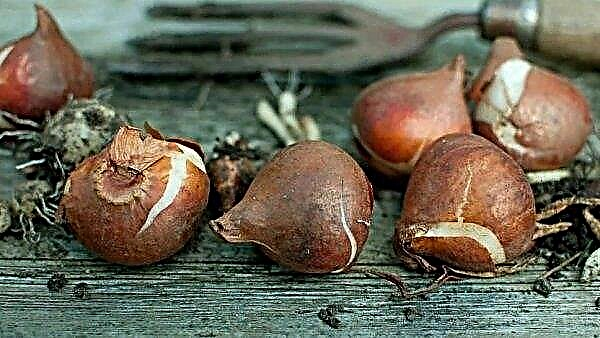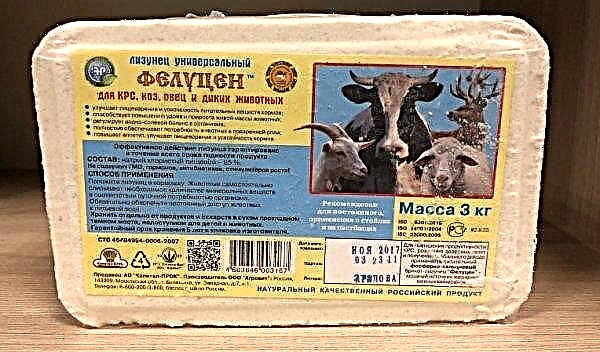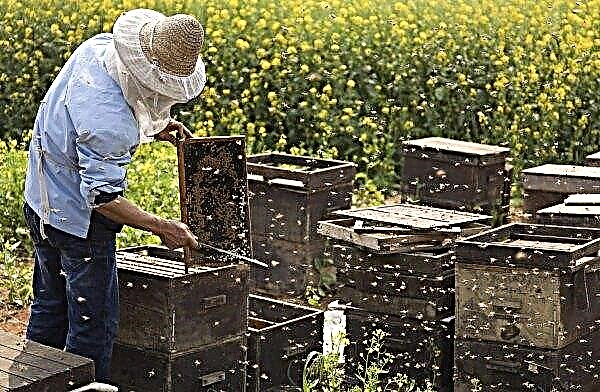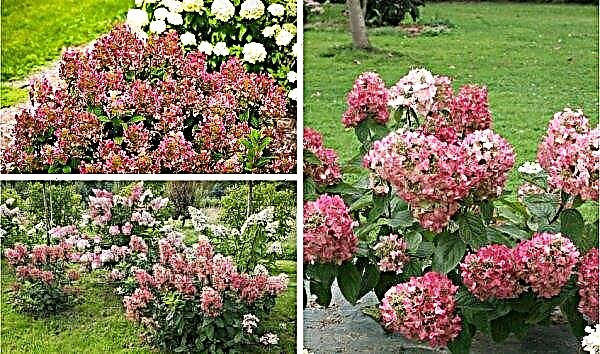Tomatoes are grown in almost every household plot, which is why it is so important to breed new varieties by breeders and improve existing ones. The article will discuss the Snowman F1 tomato variety, how to get a good crop, grow seedlings, plant it in the ground, take care of the plant and protect it from diseases and pests.
Characteristic and Description
Tomato Snowman F1 bred in the Urals. The author of the hybrid is L. A. Myazina. The variety is listed in the Russian Federation and recommended for cultivation in the following regions: Volga-Vyatka, Ural, Far East. It is intended for cultivation in the open and closed soil.
The snowman is not a full-fledged variety, it is a hybrid of the first generation. To make it clear to the consumer that the Snowman is a hybrid, the value F1 is added to its name. Early variety, resistant to low temperatures and physiological lack of moisture in the soil and air. Relatively resistant to diseases of tomatoes: late blight, fusariosis, alternariosis.
Important! The difference between the variety and the F1 hybrid is that from varietal vegetables you can collect seeds from which plants grow that are identical to the mother bush. From the seeds of the hybrid, the offspring will turn out to be diverse, with a loss of varietal qualities, since it will stratify into the parent and mother line.
A determinant hybrid, early ripe, from germination to ripeness of the fruit passes 80–85 days. Fruits - roundish, slightly flattened, red, medium size. The weight of tomatoes varies from 120 to 160 g. The hybrid has an ordinary, uncomplicated brush, on both sides of which tomatoes are staggered in the amount of 5-6 pieces. On the first brushes larger fruits are tied, by the end of fruiting their size is smaller.
On the first brushes larger fruits are tied, by the end of fruiting their size is smaller.
The hybrid can be grown both outdoors and under low film shelters. On the street, the Snowman bush reaches a height of 50 to 70 cm, in the greenhouse the plant grows a taller bush - up to 120 cm. Short stature allows you to grow a hybrid on the street without garter to pegs or trellis.
In the greenhouse, tomato bushes grow taller, the plant bears fruit longer, thanks to the use of agricultural techniques for transferring the main crop to an additional stepson.
The productivity of the Snowman is 4–5 kg per 1 m², depending on the age of the seedlings, growing conditions and the quality of the care of the plantings.
The fruits have a good taste, as for a hybrid,. Due to their uniform size, they are universal, they can be used both fresh and canned, salted, frozen, dried.
The hybrid is transportable, the fruits, being slightly unripe, successfully tolerate long-distance transportation and ripen on the way. The snowman is relatively resistant to drought and cold, thanks to a compact bush, it is suitable for a compacted landing.
Pros and cons of the variety
Snowman F1 has undeniable advantages, but it also has disadvantages.
- Pros:
- early ripening;
- tolerance to low temperatures;
- relative drought tolerance;
- the possibility of a thickened landing;
- productivity and good taste;
- medium resistance to fungal diseases;
- dense fruit consistency, good transportability.
- Minuses:
- fast termination of fruiting;
- the inability to collect seeds for propagation of the crop while maintaining varietal qualities.
Growing time
When sowing seeds for seedlings in the last decade of February, by April 10-15, the gardener will receive adult plants that can be planted in closed ground. Considering the stunted hybrid, these can be inexpensive film tunnels.
Features of agricultural technology
This is a very early stunted hybrid, growing such tomatoes makes sense when you need to get an early crop in a short time. For example, for sale in spring or early summer at the highest prices.
Important! The deeper the seedlings are planted, the more abundant the root system will be in an adult plant. A seedling stalk sprinkled with earth will provide many additional roots that nourish an adult tomato bush.
Therefore, it is optimal: to grow a very early seedlings, possibly in a window house, and to plant plants already well developed, possibly with the first flowering brush.
Growing seedlings
Sowing seeds for seedlings:
- The timing. Each gardener can calculate the sowing time independently, based on the fact that the time of growing tomatoes from seeds from the appearance of sprouts from the soil to adult seedlings takes 35–45 days. For example: with the planned planting of tomatoes on May 1, you need to sow the seeds on March 15–20.
- The soil. It is better to purchase ready-made soil in garden shops, its composition is suitable for growing seedlings: it is loose and hygroscopic. You can mix the soil mixture yourself in the fall. To do this, peat crumb, crumbly humus and chernozem are combined in equal parts. Also, a couple of handfuls of white river sand and wood ash can be added to the soil mixture.
- Containers. For growing tomatoes, general containers are suitable - wooden or plastic boxes the length of the entire window sill. Horticultural centers offer a successful solution for growing seedlings - polyethylene pallets, divided into individual cells, equipped with a tray for water flow and a top transparent cover. Pallets are designed for the number of plants from 20 to 96 pieces. You can also use large beer plastic glasses, clipped plastic bottles for drinks, paper containers for yogurt and sour cream. In the bottoms of any kind of containers for seedlings, there should be openings for water drainage.
- How to sow. In common sowing boxes, seeds are sown along grooves 1 cm deep. At the same time, the distance between rows (grooves) is made not less than 5 cm, and the distance in a row between seeds is 2-4 cm. In the cell pallets or individual pots, the seeds are sown in the center, 2 pieces in each container, with a distance between seeds of 1 cm. This is done so that with poor germination of tomato seeds there is a guarantee that the cell (pot) will not be empty. If both seeds sprout, the weaker sprout is removed, carefully cutting it near the ground with the help of manicure scissors. In no case should you pull out the plant to be removed, as this will damage the root system of a nearby seedling.
- How to water. In the first 10 days after the emergence of sprouts from the ground, watering is reduced to a minimum. With strong drying of the topsoil in containers, they carefully moisten the aisles with warm water. A grain of manganese is added to the water for irrigation, after which the liquid acquires a dark pink color. This is done to disinfect the soil and reduce the possibility of developing such a dangerous disease as the black leg. It is advisable that when watering the water does not fall on the stems of seedlings. When the plants appear a second pair of true leaves, the frequency of watering is increased to two times a week.
- Hardening. Since Snowman tomato seedlings are grown early, the vegetable grower does not have the opportunity to take plants for hardening on the street or balcony. In this regard, the best option in the first month of cultivation is to air the room in which the seedlings are grown twice a day for 30 minutes. 2 weeks before planting tomatoes in open ground, they are gradually accustomed to street conditions. To do this, containers with seedlings are taken out daily to the street and set in the shade or partial shade. In the early days, the duration of the "walk" does not exceed 1 hour, during the week gradually increasing to a full day. At night, seedlings are brought into the room.
 If there are no openings for draining water in the purchased plastic containers, you can make them yourself. To do this, the metal part of the screwdriver is heated on an open fire, for example, above the gas burner, and, touching the hot metal to the plastic, burn sewage holes with a diameter of 0.5 cm.
If there are no openings for draining water in the purchased plastic containers, you can make them yourself. To do this, the metal part of the screwdriver is heated on an open fire, for example, above the gas burner, and, touching the hot metal to the plastic, burn sewage holes with a diameter of 0.5 cm.Treatment of a plot for planting seedlings
Before planting hardened seedlings in a permanent place, prepare a bed for tomatoes. To do this, fertilize the soil with humus from cattle manure at the rate of: 1 bucket per 1 m². Fertilizer is laid out on the surface of the beds in an even layer, after which the soil is dug up with a shovel with a turnover of the reservoir.
Also, for cultivating the soil, you can use home cultivators, walk-behind tractors, garden forks. If it is not possible to fertilize the soil with humus, apply mineral fertilizers, which are also scattered on the surface of the soil before digging.
Did you know? In the Middle Ages, in France, tomato was considered an aphrodisiac. That is why in French, the fruits of the tomato were called pomme d'amour, which literally means "apple of love."
After digging the soil, harrowing is carried out using a garden rake so that after the work all the earth lumps are crushed and the surface of the bed is leveled with a slight bias towards the edges.
Seedling Planting Technology
After preparing the garden, the most crucial moment comes - planting tomato seedlings in a permanent place.
Important! Seedlings in containers are not watered before planting, since a dry earthen lump does not allow injuring the root system of a plant during transshipment from a container into a hole in a garden bed. Watering is carried out in the hole before planting, and on the surface of the soil immediately after planting.
Instructions for planting seedlings of tomato hybrid Snowman:
- Containers with seedlings growing in them are carried closer to the garden. Before planting, they are installed in the shade or partial shade. If this is not possible, light tissue or agrofiber is shaded over the seedlings for shading.
- Low-growing tomatoes, suitable for thickened planting, are planted according to the scheme: 30 cm between the bushes, with a row spacing of 40 cm. A path of 60 cm wide is necessarily laid every 4-6 rows. This is necessary not only for the convenience of caring for the plantings, but and to observe the light regime for growing tomatoes. Using a chopper or shovel, dig holes for planting. The depth of the holes is 25-30 cm, the width is at least 20 cm. At least 2 liters of water are poured into each well.
- Trying not to damage the root system, the seedlings are taken out of the containers: they are dug out from the common planting boxes using a garden fork for seedlings, and they are gently shaken from the individual containers with a lump of earth containing the root system.
- Seedlings are placed in moist holes and covered with soil until the first leaves so that a small indentation (3-5 cm) is formed in the basal zone. Thanks to a small excavation in the soil, it is more convenient for the gardener to water the young bushes, all the water will fall under the root without spreading.
- Since Snowman tomatoes are an early variety, the planting time will be mid-spring. Therefore, arcs are installed over the bed and covered with a plastic film (for heat). Every day, the ends of the polyethylene tunnel open for ventilation. In this position, they remain during the day, at night they are again closed. After May 10-15, the polyethylene shelter above the bed can be removed.

Tomato Care
The gardener will get a good harvest of the Snowman if he provides the plants with proper care. This concept includes timely spraying of tomatoes with chemical and biological preparations that prevent the occurrence of diseases and pest attacks. Also, tomatoes need to be sprinkled on time.
Fertilizers and watering
Tomatoes can be watered in several ways:
- Parallel to the tomato row, at a distance of 15–20 cm from the plants, an irrigation ditch 10–15 cm deep is dug. Water can enter this ditch from the garden hose laid at its end.
- The beds along the tomato rows are equipped with drip irrigation. For tall tomatoes, it is better to choose drip irrigation tapes with a range between holes of 50 cm. The design is connected to a water tap. In the event that there is no water supply or column nearby, attach the irrigation system to an iron water barrel installed at a meter height.
- In the middle between two tall tomatoes, a large plastic bottle is instilled upside down, in which the bottom is cut off. Irrigation water is poured into original containers every three days, and liquid root top dressing can be added with water. Water is slowly absorbed into the ground and wets the area around it (up to a meter in diameter).
Important! Tomatoes do not like watering by sprinkling (on leaves). Such superficial moistening contributes to the outbreak of fungal diseases (late blight, alternaria, anthracnose or gray rot).
For the development of the tomato bush and the abundant fruiting of the plant during the growing season, you need to feed. Top dressing can be of two types:
Top dressing can be of two types:
- Leafy.
- Root
Leaf dressing is important for tomatoes, as it allows nutrients to penetrate directly into plant tissues, replenishing the plant's need for potassium, boron, copper, magnesium and zinc.
You can feed the plant sheet by preparing such a nutrient solution: add any of the following mineral additives to a bucket of water:
- potassium - 1 gram;
- boric acid - 1 gram;
- magnesium sulfate - 2 grams;
- zinc sulfate - 2 grams;
- copper sulfate - 0.5 grams.
Complex fertilizers, which can be purchased at the store, are well suited for feeding tomatoes.
During the summer, you need to feed plants 3-4 times a leaf. Between leaf dressings are made intervals of 14 days. Primary foliar top dressing is carried out 2 weeks after transplanting.
Next, tomato fertilizers are carried out on a leaf twice a month, leaf dressing with the use of boric acid during flowering and the formation of fruit brushes is especially important. To prevent the appearance of burns from sunlight on the leaves of tomatoes, top dressing is done in the evening or in the absence of sun.
To prevent the appearance of burns from sunlight on the leaves of tomatoes, top dressing is done in the evening or in the absence of sun.
Did you know? Like other vegetables in the solanaceous family of tomatoes, they contain the toxic substance solanine. A person can be poisoned with solanine if one consumes a large number of green vegetables belonging to this family.
Recipes of root dressing per 10 l of water:
- 1 tbsp. a spoon of nitrophosphate and 20 g of potassium;
- concentrated bird droppings (0.5 l), 20 g of superphosphate and 5 g of potassium sulfate;
- 1 tbsp. a spoonful of finished mineral fertilizers for solanaceous crops;
- 1 liter of green fermented fertilizer and 1/3 teaspoon of copper sulfate (2 g);
- 1 liter of green fermented barrel fertilizer, 0.5 liter of wood ash, 2 tbsp. tablespoons of superphosphate, 1/3 teaspoon of copper sulfate (2 g).
By choosing one of these recipes, it is advisable for the gardener to fertilize the tomatoes with a frequency of once every 14 days. Under each plant make 1 liter of liquid top dressing.
Pasynkovka and formation of a bush
Low-growing varieties do not stepchild, as the procedure reduces yield. The snowman is not prone to a strong formation of stepsons, but if you want to increase the mass of fruits in the bushes, you can carry out stepsoning.
At least 7 fruit-bearing branches (stepsons) are left on each plant, the extra stepsons are cut out using a garden pruner or with a sharp knife. Leave the most developed stems with lots of flowers or brushes. Also, the removal of stepchildren is done so as to form a sparse bush, giving air access to all branches of the plant.
Also, the removal of stepchildren is done so as to form a sparse bush, giving air access to all branches of the plant.
Important! In nature, there is a law: the more abundant the crop, the smaller the fruits. To increase the size of tomato fruits, gardeners monitor the load of plants by the crop, and, if necessary, remove excess ovaries.
Soil cultivation and weeding
To prevent tomato beds from overgrowing with weeds, they need to be weeded about once a week.Weed plants in the garden take away space from tomatoes for growth, absorb nutrients from the soil intended for tomatoes, and also serve as a haven for harmful insects.
Weeding carries not only the function of cleansing from weeds, but also aerates the earth. After weeding, the soil becomes light, through it moisture easily penetrates to the roots of tomatoes. Unfortunately, often carried out weeding is physically tiring for humans, therefore, an increasing number of tomato growers prefer the agricultural technology of growing tomatoes with mulching beds.
Also, black or black and white double-sided spanbond is used as mulch. Such a spunbond is a novelty that takes into account all the specifics of growing plants. Being laid on the ground, black to the ground, white up, the spanbond does not allow weed seeds to germinate.
A bed closed with a spanbond does not need to be watered often, since agrofiber prevents evaporation of moisture from the soil.
You can also mulch the beds last year's leaves from the garden, humus or humus, sawdust (obtained from deciduous trees). The layer of mulch (10-15 cm) must be maintained throughout the summer, periodically it must be updated, since after some time the decomposition of organic matter occurs. Through the thinned layer of mulch, the most powerful weeds, such as sow thistles, can sprout. Mulch carries a double burden: it saves the earth from moisture evaporation, feeds the roots with slowly decomposing organic matter and prevents the emergence of weeds.
Through the thinned layer of mulch, the most powerful weeds, such as sow thistles, can sprout. Mulch carries a double burden: it saves the earth from moisture evaporation, feeds the roots with slowly decomposing organic matter and prevents the emergence of weeds.
Did you know? Traditional medicine claims that the presence of tomatoes in the food is good for the joints. Raw tomato fruits contain lycopene, a natural anti-free radical product.
Diseases and pests, prevention
Tomato plants are susceptible to fungal, bacterial and viral diseases.
Fungal and bacterial diseases can be treated or prevented with the help of chemicals, such as:
- Oksikhom;
- "Quadrice";
- "Tomato";
- Fitosporin-M;
- "Metaxil";
- "Ridomil Gold."
The preventive measures taken against these diseases are important. Also, in order to avoid the onset and development of diseases, it is necessary to use proven seed material, disinfect the soil from fungal spores wintering on plant debris, and apply a non-thickened planting scheme. Fungal and bacterial diseases of tomatoes:
Fungal and bacterial diseases of tomatoes:
- bacteriosis;
- late blight;
- Septoria;
- brown spotting;
- vertex rot;
- powdery mildew;
- leaf mold;
- wet rot of tomatoes.
Viral diseases of tomatoes have no treatment, so if a diseased plant is found, it must immediately be removed from the tomato bed, taken out of the area and burned.
Tomato viral diseases:
- strick
- tobacco or cucumber mosaic;
- aspermia.
Did you know? Tomatoes were brought to Europe from South America in 1540 by the Spanish conqueror Cortes.
Pests of tomatoes:
- Aphid. Very small insects with a body length of 0.5 mm, feed on cells and plant sap. Chitin color can be black, gray, green, pink. Aphids live in colonies and are in symbiosis with ants that bring them to plants and protect them from other predatory insects. Ants feed on sweet fluid (honey dew) secreted by aphids. To kill aphids, pollinate plants with insecticides or herbal decoctions (on nettles, dandelions). Simultaneously with the destruction of aphids, it is desirable to drive the ants away from the tomato beds, otherwise, after a few days they will again bring the aphids to the plants. To destroy ants, poisonous baits are placed next to the anthill, which can be purchased at garden centers.
- Colorado beetle. Dangerous insect for plantations of the nightshade family. The beetle has a hard, rounded shell in cream and black stripes. Over the summer, several generations can hatch. Particularly dangerous are the larvae of the Colorado potato beetle - they are very voracious and can completely destroy tomato beds in a few days. Adult beetles and larvae feed on plant leaves. They fight the Colorado potato beetle by treating leaf plantings with insecticides such as Karate or Aktara.
- Spider mite. It has tiny body sizes, with the naked eye, with certain efforts, you can notice an adult tick in the form of a black dot. Young ticks have a transparent body, therefore they are practically invisible. The spider mite feeds on the juice of tomato leaves, which causes a halt in growth, and subsequently the death of the plant. The presence of a spider mite on a plant can be determined by scraps of thin cobwebs attached to branches. A method of combating spider mites is the treatment of plantings with insecticides: Apollo, Aktofit, Akarin, Envidor, Sunmayt.



Harvesting and storage rules
Snowman picks tomato fruits as soon as they gain the mass characteristic of the hybrid and change their color from green to brown. Tomatoes are not allowed to ripen on the bushes, as this delays the ripening of the entire crop. The faster the tomato is removed from the plant, the more nutrients will go to other fruits.
Did you know? The shape of tomato fruits can be spherical, oblate, elongated, and even square.
Torn tomatoes are placed in cardboard boxes having holes in the side walls and left to ripen. The tomatoes in the box turn red for about two weeks, the timing depends on the temperature in the room where the container with fruits is located.
For transportation over long distances, it is preferable to take brown tomatoes - such fruits are solid, do not suffer during transportation and turn red during a long transportation.
The temperature in the room where the tomatoes are stored should not exceed +18 ... + 22 ° C. Also in the warehouse must provide good ventilation.
The first-generation hybrid, Snowman F1 tomato, is mainly grown for a very early harvest. This is possible when using early seedlings of these tomatoes and with subsequent proper care of the plants.


